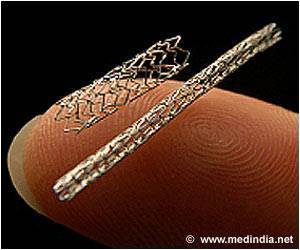Even light exercises such as gardening, walking in the park, and folding clothes can reduce the risk of developing heart disease in older women, reveals a new study.

TOP INSIGHT
Light physical activity such as gardening, walking in the park, and folding clothes can reduce the risk of developing heart disease in older women.
Read More..
"When we tell people to move with heart, we mean it, and the supporting evidence keeps growing," said David Goff, M.D., Ph.D., director of the Division of Cardiovascular Sciences at NHLBI. "This study suggests that for older women, any and all movement counts towards better cardiovascular health." Goff added that the findings are consistent with the federal government's most recent physical activity guidelines, which encourage replacing sedentary behavior with light physical activity as much as possible.
In the five-year prospective study, researchers followed more than 5,800 women ages 63 to 97 to find out if higher amounts of light physical activity were associated with reduced risks of coronary heart disease or cardiovascular disease.
Across all racial and ethnic groups, the link was clear, said study author Andrea LaCroix, Ph.D., chair of the Division of Epidemiology and director of the Women's Health Center of Excellence at the University of California, San Diego.
"The higher the amount of activity, the lower the risk," she said. "And the risk reduction showed regardless of the women's overall health status, functional ability or even age. In other words, the association with light physical activity was apparent regardless of these other factors."
The current study involved a racially and ethnically diverse group of 5,861 women who were enrolled between 2012 and 2014. None had a history of myocardial infarction or stroke. The women were part of the NHLBI-funded Objective Physical Activity and Cardiovascular Health (OPACH), a sub-cohort of the Women's Health Initiative.
"To our knowledge, this is the first study to investigate light physical activity measured by accelerometer in relation to fatal and non-fatal coronary heart disease in older women," said LaCroix, who led the OPACH study.
Previous studies have largely relied on self-reporting questionnaires, but most people, the researchers said, do not think of folding clothes or walking to the mailbox as physical activity of any kind.
"Those questionnaires do not capture the low-intensity movements accrued in activities of daily living," LaCroix said. Even in her own OPACH findings, she noted, "there was no correlation between the amount of self-reported light physical activity and the amount we measured with the accelerometers. Without accurate reporting, we run the risk of discounting low-intensity activity associated with important heart health benefits," she said.
Researchers need to conduct large randomized trials to determine if particular interventions might increase light physical activity in older women, and what effect that would have on cardiovascular disease rates. But the OPACH authors said they encourage this group to increase their light physical activity immediately.
Source-Eurekalert
 MEDINDIA
MEDINDIA




 Email
Email










